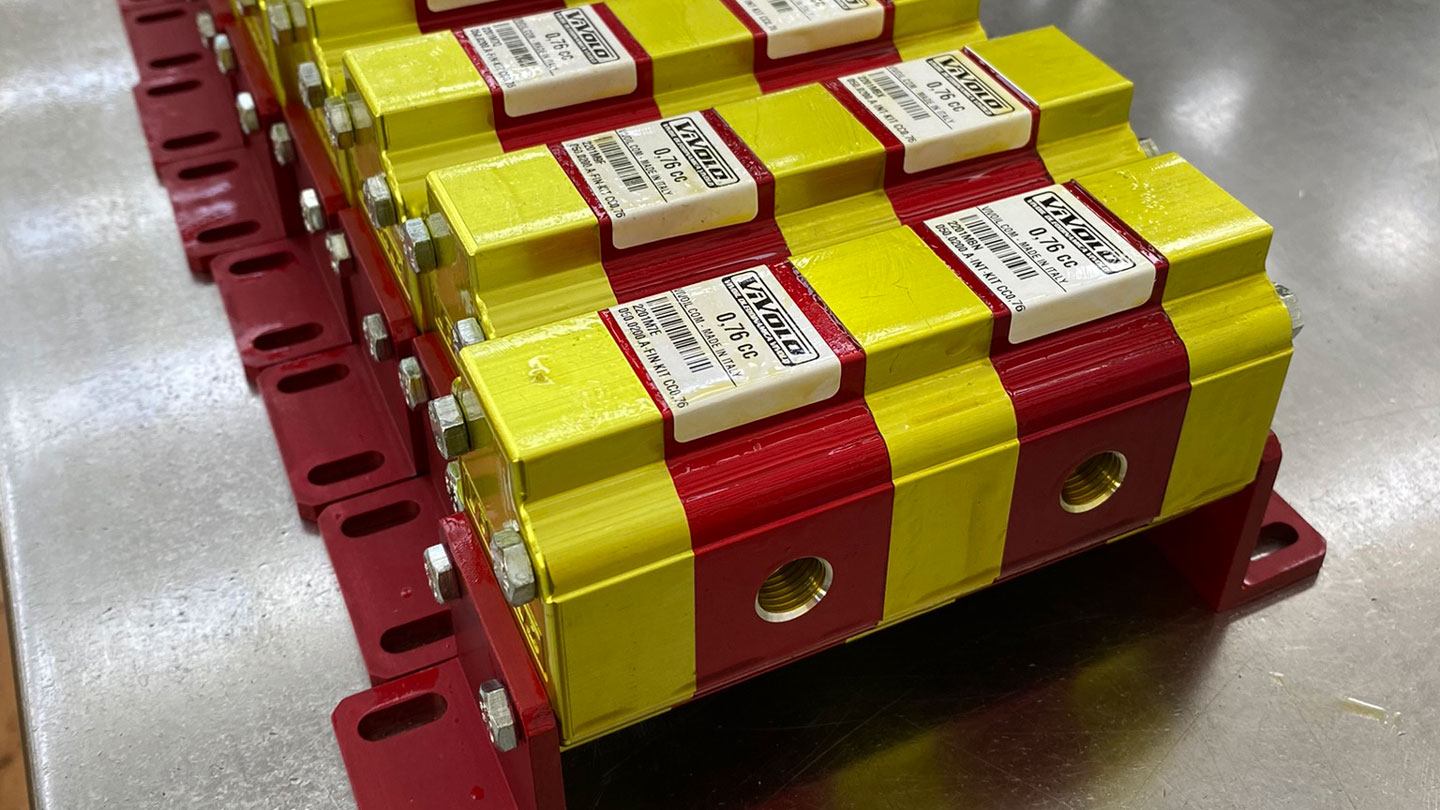
Have you noticed that the cylinders connected to the flow divider in your system are not moving at the same time? This is a situation that can occur for many reasons.
In this article we look together at the main causes and the most effective solutions to deal with the problem.
Flow dividers have a physiological error of 3%
Hydraulic flow dividers are very accurate, but a percentage of error is always present, in ours as in other dividers on the market. For Vivoil flow dividers, the error is a maximum of 3% for a load difference of up to 30 bar.
This is a physiological error that cannot be eliminated and can result in cylinder misalignment.
So, first, you need to calculate the error percentage and the load difference, so that you can determine whether the error you noticed is normal or whether it is due to a system or component problem instead.
So an error below 3% in flow rate is normal.
Load differences greater than 30 bar
When the load is not uniform, above 30 bar, this can lead to major cylinder misalignment.
Under these conditions, if the error is greater than what is needed in the application, we recommend that you consider, where possible, the Auto-Compensating Flow Divider MIA-FD, designed for these situations
In fact, MIA-FD was born to handle systems with even very large pressure differences because it is equipped with an auto-compensation system that allows the flow to be divided without being affected by the load difference between elements.
There is a problem in the calibration of the relief valves
If the divider is with relief valves, it is possible that the misalignment of the cylinders is due to an imperfect pressure adjustment. You can tell because the relief valve opens at a stage when it should not open.
In fact, the relief valves, during their normal operation, should always remain closed, and open only when the cylinders reach the end of their stroke. At that point, the pressure rises until it reaches the valve’s set pressure and the oil goes to drain.
On the other hand, when the valve pressure is close to the working pressure, the valve does not open at the end of the cylinder stroke, but during the stroke. By opening at this juncture, however, some of the oil escapes and goes to drain. As a result, the cylinder is misaligned, leading to a high error.
In such cases, it is recommended to raise the valve setting to at least 20 bar higher than the maximum operating pressure on the cylinder.
Should you need several reset points (not at the end of the stroke), you can consider a different type of component: a flow divider with electrically operated valves, in which the valves are activated by an electrical pulse and the rephasing is not pressure-dependent.
The other causes of cylinder misalignment
You have checked all the possibilities considered so far, but the load difference is less than 30 bar and the adjustment of the valves is correct. Then it is possible that the cylinder misalignment is due to problems with the system.
There is air in the system
Sometimes, cylinder misalignment occurs when air is present in the system. For example, it may occur if the drainage pipe of the divider with valves (RV-V) is not mounted under header. In this case, during the rephasing phase, the divider draws in air instead of oil.
There is an error in the drain connection
If the error occurs during reunification, the problem is most likely due to the lack of a downstream flow regulator.
The lack of rephasing led to a cumulative error
If the runs occur without rephasing and the cylinders are always in motion, the errors never reset. The misalignment you notice, therefore, could result from a cumulative error. In such cases to solve the problem, a periodic reset cycle should be considered.
The divider was not sized correctly
This is the case when the divider is not sized correctly for the system. To find out if this is the case, we advise you to check in our catalogs whether the flow rate you have planned is within the set limits.
Damage to gaskets
Finally, it is possible that cylinder gaskets are damaged, leading to a lack of sealing that causes misalignment.
Is your case not among those listed? Contact us for help!
